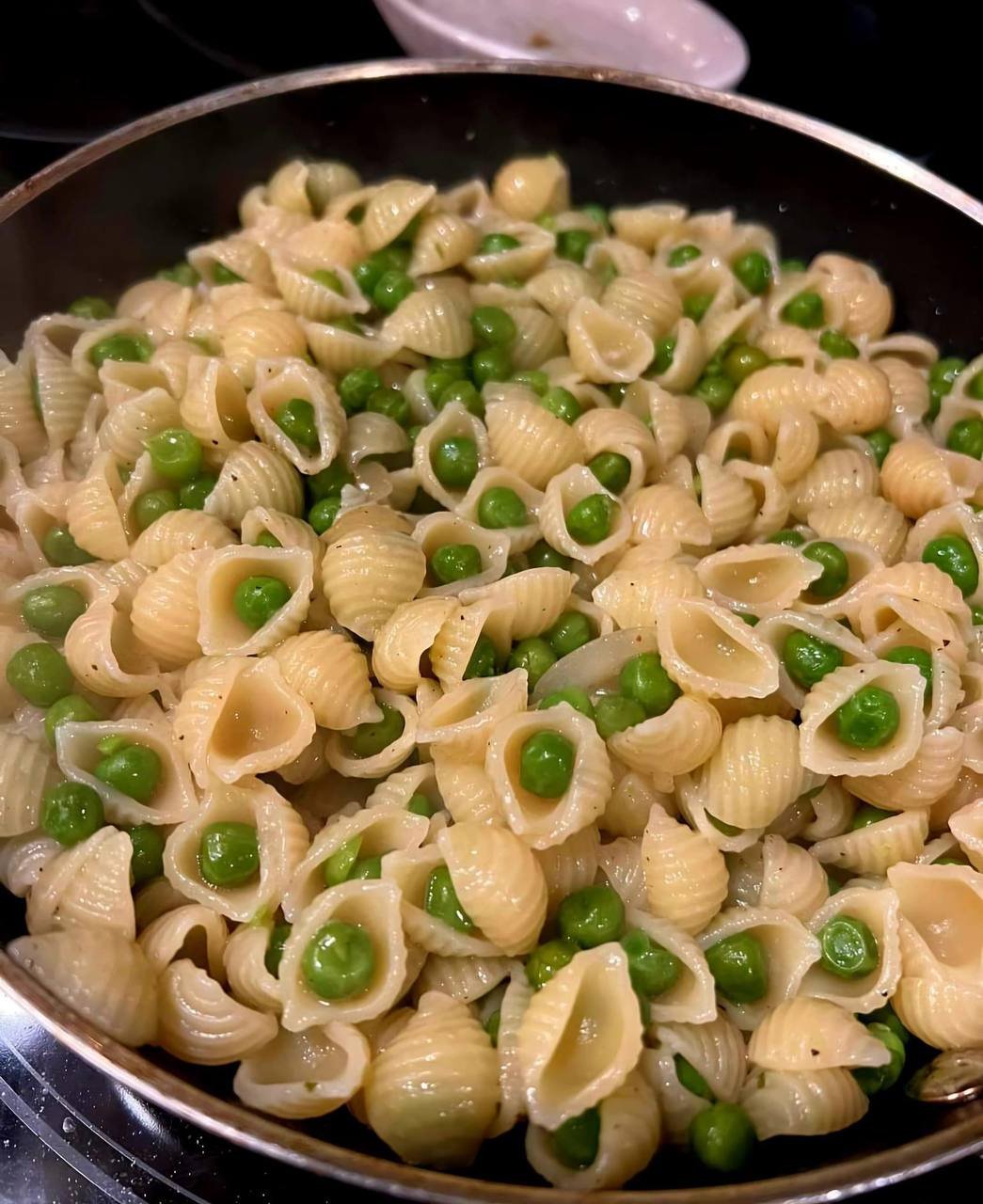Italian cuisine is known for its ability to take the simplest of ingredients and transform them into something deeply comforting and flavorful. One of the most humble yet delicious dishes in the Italian home kitchen is Pasta e Piselli, or “pasta with peas.” This rustic recipe comes from southern Italy, particularly Naples, where families often relied on inexpensive pantry staples to create hearty, satisfying meals. The combination of tender pasta, sweet green peas, aromatic onions, and olive oil creates a dish that is nourishing, quick to prepare, and endlessly comforting. Whether enjoyed as a light lunch, a weeknight dinner, or even a side dish to roasted meats, Pasta e Piselli embodies the essence of cucina povera—simple food made with love and creativity.
Ingredients
-
2 tablespoons extra virgin olive oil
-
1 small onion, finely chopped
-
1 garlic clove, minced (optional)
-
2 cups fresh or frozen peas
-
4 cups chicken or vegetable broth (or water, for a lighter version)
-
1 cup small pasta (ditalini, tubetti, or small shells)
-
¼ cup grated Pecorino Romano or Parmesan cheese
-
2 tablespoons chopped fresh parsley
-
Salt and freshly ground black pepper, to taste
-
Extra olive oil, for drizzling
Instructions
1. Sauté the aromatics
Begin by heating the olive oil in a medium-sized pot over medium heat. Add the finely chopped onion and cook gently until it turns soft and translucent, about 5 minutes. If you enjoy a touch of extra flavor, stir in the minced garlic and cook for an additional minute. The onion forms the base of the dish, infusing the peas and pasta with a subtle sweetness.
2. Add the peas
Stir in the peas and cook for a few minutes, allowing them to absorb the flavor of the onions and olive oil. If using fresh peas, cook them a little longer until they begin to soften. Frozen peas, which are picked and preserved at peak freshness, will only need a few minutes of cooking.
3. Simmer with broth
Pour in the broth and bring the mixture to a gentle simmer. This step not only cooks the peas further but also creates the flavorful liquid in which the pasta will cook. Using broth instead of plain water adds depth, but the dish will still taste delicious if water is used. Allow everything to simmer for 5–7 minutes.
4. Cook the pasta
Add the pasta directly into the pot with the peas and broth. Stir occasionally to prevent sticking and cook until the pasta reaches al dente texture, usually about 8–10 minutes depending on the shape. The starch from the pasta thickens the broth, creating a light, creamy consistency without the need for cream or butter. If the mixture seems too dry, add a splash of hot water or extra broth.
5. Finish with cheese and herbs
Once the pasta is cooked, remove the pot from the heat. Stir in the grated Pecorino Romano or Parmesan, which melts into the dish and adds a salty, nutty richness. Sprinkle with fresh parsley for brightness. Taste and adjust with salt and freshly ground black pepper as needed.
6. Serve
Spoon the Pasta e Piselli into warm bowls, drizzle with a little extra virgin olive oil, and add more cheese on top if desired. Serve immediately while still warm and comforting.
Tips and Variations
-
Pasta choice: Small pasta shapes like ditalini, tubetti, or elbow macaroni work best because they blend seamlessly with the peas. However, you can use broken spaghetti or any small pasta you have on hand.
-
Broth vs. water: Using broth creates a richer flavor, but traditional cucina povera often used just water. Both methods are authentic.
-
Protein boost: For a heartier version, you can add diced pancetta or prosciutto with the onions at the beginning for extra savory depth.
-
Creamier texture: For a thicker consistency, mash some of the peas against the side of the pot before adding the pasta. This releases their natural starches and makes the dish creamier.
-
Vegan option: Simply use vegetable broth and omit the cheese, or substitute with a plant-based alternative.
